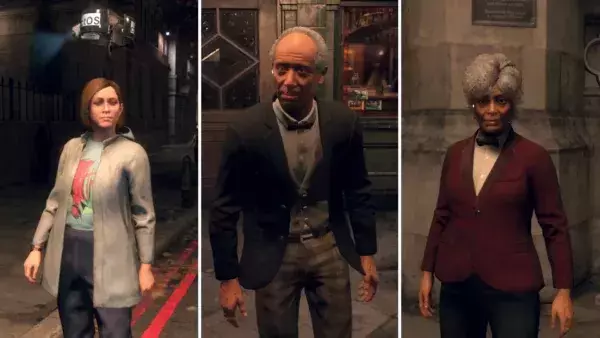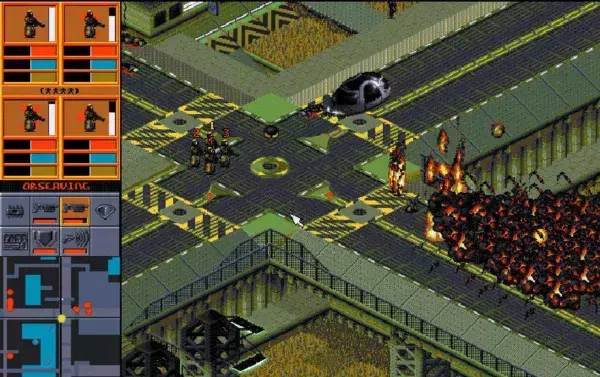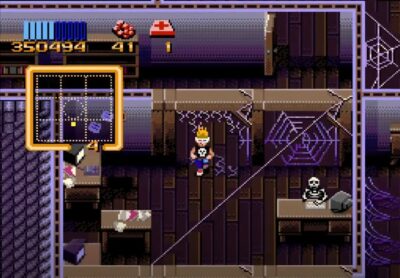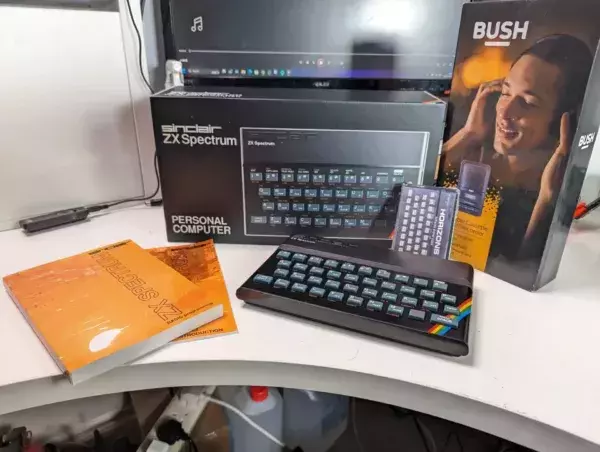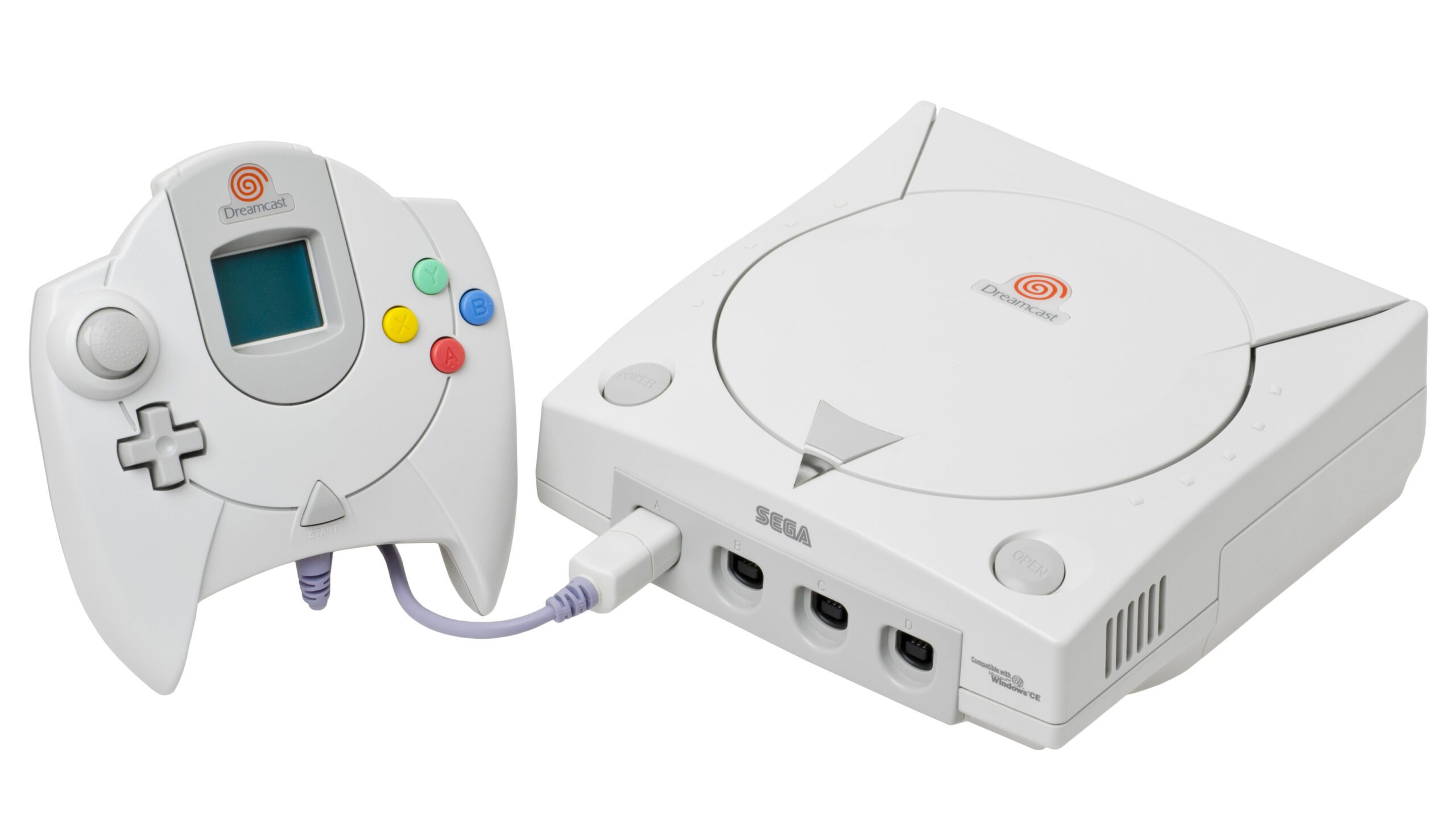
In 1998, the release of the Dreamcast gave Sega an opportunity to turn around its fortunes in the home console market. The firm’s earlier system, the Saturn, though host to some beloved titles, was running a distant third in sales behind the Nintendo 64 and PlayStation.
The Dreamcast, by contrast, saw a successful launch and quickly became the go-to system for arcade-quality ports of fighting games, among other groundbreaking titles like Seaman and Crazy Taxi.
Unfortunately for fans, it wasn’t to last. The Dreamcast struggled to compete against the PlayStation 2, which launched in 2000, and at the end of March 2001, in the face of the imminent launch of the Nintendo GameCube and Microsoft’s new Xbox, Dreamcast left the stage, and Sega abandoned the console market altogether.
None of this stopped a vibrant homebrew development scene springing up around the console in Sega’s place, and even years later, the Dreamcast remains a thriving venue for indie developers.
Roel van Mastbergen codes for Senile Team, the developers of Intrepid Izzy, a puzzle platformer coming soon to the PC, PS4 and Dreamcast. Of the port to Sega’s ageing console, van Mastbergen tells us, “I started this project with only the PC in mind. I’m more used to developing for older hardware, though, so I tend to write code with low CPU and RAM requirements by force of habit. At some point I decided to see if I could get it running on the Dreamcast, and I was happy to find that it ran almost perfectly on the first try.”
One of the pluses of the Dreamcast, van Mastbergen points out, is how easy it is to develop for. “There are free tools and sufficient documentation available, and you can run your own code on a standard Dreamcast without any hardware modifications or hacks.”

Xenocider, the Dreamcast’s first fully 3D game in a while
Games burned to CD will play in most models of unmodified Dreamcast, usually with no extra software required. While this doesn’t result in a huge market – the customer base for new Dreamcast games is difficult to measure but certainly small – it makes development for original hardware far more viable than the need for often expensive and difficult to install modchips needed for other systems.
Many of the games now being developed for the system are available as digital downloads, but the state of Dreamcast emulation lags behind that of its competitors, with no equivalent to the popular Dolphin and PCSX2 emulators for GameCube and PS2. All this makes boxed games on discs more viable than on other systems – and, in many cases, physical games can also become prized collectors’ items.
Kickstarting Dreams
By now, you might be asking yourself what the point is of developing for these old systems – especially when creating games for PC is a much easier and potentially more profitable route to take. When it comes to crowdfunding, though, catering to a niche but dedicated audience can pay dividends.
Belgian developer Alice Team, creators of Alice Dreams Tournament, asked for €8,000 in funding to complete its Dreamcast exclusive, which began development in 2006. It eventually raised €28,000 – more than treble its goal.
Intrepid Izzy didn’t quite reach such dizzying heights, only just meeting its €35,000 target, but van Mastbergen is clear it wouldn’t have been funded at all without the dedicated Dreamcast base. “The project has been under-funded since the beginning, which is slightly problematic,” van Mastbergen tells us. “Even so, it is true that the Dreamcast community is responsible for the lion’s share of the funding, which is a testament to how well-loved this system still is.”
Tricks and tools
Carlos Oliveros, whose team Retro Sumus are developing Xenocider, the console’s first fully-3D game in 17 years, agrees that there’s still life in the Dreamcast: “The Dreamcast has some quite good open-source tools for developing games, and extensive documentation is available,” he says. “Sure, there is nothing remotely as versatile as Unity, but you can create a little something here and there in a reasonable amount of time… and it’s not nearly as frustrating as developing for the Saturn!”
Xenocider has been in development for four years, and is largely built on all-new technology. It’s a 3D shooter inspired by Sega’s arcade classic, Space Harrier, with, Oliveros says, “a heavy influence from Treasure’s Sin & Punishment, which we realised later when we were creating the first assets for the game.”

Sturmwind was a huge deal for the DC homebrew community
The game’s engine, Dreamer, was built from the ground up by Daniel Lancha, who goes by the handle Chui. He’s a big name in the community, and was responsible for dreaming up a variety of tools, including ports of the popular SDL and OpenGL libraries, as well as a range of emulators.
“The Dreamcast is special because, in my opinion, it was the last arcade-based, or arcade-inspired, console in history. Besides, it is pretty accessible from a developer’s perspective” he says, before admitting the console has no real advantages over more modern systems. “Just three words for you,” Lancha adds. “16MB of RAM. Talk about insignificant. That really is the biggest challenge!”
Sturmwind made news on release in 2013 as one of the first of a new generation of boxed Dreamcast games. German studio Duranik developed the side-scrolling shooter, starting in 2006. Johannes Graf, who developed the game alongside his brother, says that on starting out, developing for the Dreamcast was an easy choice.
“Modern consoles were not an option, as we developed the game only in our free time and there was no easy access to devkits for modern consoles back then,” Graf tells us. “PC would have been an option but we are not so much PC gamers. Also, we always loved ‘old’ machines like the Dreamcast, Mega Drive, SNES, Lynx and Jaguar.”
Developing for the Dreamcast also has another advantage, Graf notes: it’s a much smaller market to enter than, say, Steam.
“Most of these new marketplaces are completely crowded; there are maybe a couple of thousand new apps released for the mobile platforms every day,” says Graf. “How do you want to get at least a bit of visibility there? With the retro platforms, it’s completely different – if there are 10 to 20 new releases a year, it’s a lot.”
With crowdfunding able to bring these dreams to life, it might be surprising that publishers, of a kind, still operate in the Dreamcast homebrew community. But JoshProd, relatively new on the scene, does just that, producing high-quality boxed releases for new games. These have even included mainstream titles, with the last couple of years seeing the release of Delphine Software’s nineties classic action-adventures, Another World and Flashback.
Publishing and Distribution
Like Daniel Lancha, Philippe Nguyen of JoshProd says the main limitation is the Dreamcast’s 16MB of RAM, which bottlenecks the scope for new ideas. “We had to cancel lots of good games like Gigantic Army or Infinos Gaiden,” he says. Nguyen’s justification for working around these difficulties, however, echoes other developers we spoke to. “The reply is simple: passion and nostalgia,” Nguyen tells us. “You don’t make money with Dreamcast, you make a part of game history”.
Boxed releases slot well into the existing infrastructure for console mods and homebrew games. Michael Mrozek runs DragonBox, a German-based online store selling everything from replacement Nintendo 64 analogue sticks to independent releases for a range of consoles, including the Game Boy Advance, Mega Drive and, naturally, the Dreamcast.

Some of JoshProd’s wares
“Dreamcast games sell really well, to be honest – better than cartridge-based games,” Mrozek says. “I can imagine that one of the reasons is the price: homebrew titles usually tend to be a lot simpler than commercial titles, with some exceptions like Sturmwind, Wind and Water: Puzzle Battles or the upcoming Intrepid Izzy, or Tanglewood for the Mega Drive. While high-quality games like Sturmwind sell well for a normal retail price, a lot of customers can’t justify having to pay a high price for more simple titles. On the Dreamcast, that’s not that big a problem, as producing the discs is very cheap, so you can sell simple games for a small and reasonable price.”
While custom cartridges for the Mega Drive are available, they sell on DragonBox for €11 apiece, without counting the additional cost of the hardware to write the ROMs to the carts. With such a high markup for production, Dreamcast games typically cost less than half as much as Mega Drive titles.
Around 60 homebrew games have now been released for the Dreamcast in total – a significant percentage of the console’s entire library – and, to date, there’s no sign of the scene slowing down. While developers may be pitching for a limited audience, it’s one that is still captivated by the possibility of a console that many feel didn’t fulfil its potential in its own time. With more games being released year on year – and with ambitious 3D games like Xenocider on the way – it’s clear that this small community is still dreaming big.


